10 Wildflowers That Grow in Texas (Identification Guide With Pictures)
-
- Last updated:
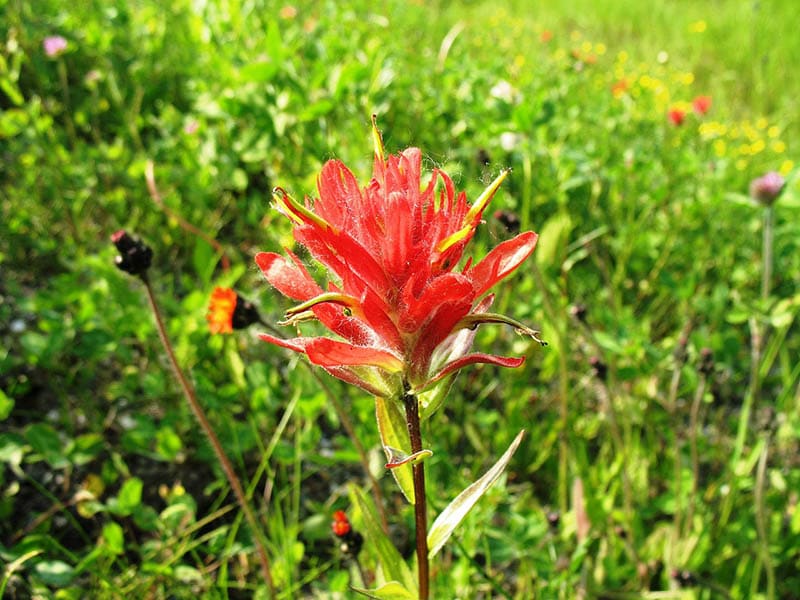
If you’re looking for a place to see some of the most beautiful wildflowers in the world, look no further than Texas. Home to one of the most diverse and colorful collections of wildflowers in the United States, Texas is a backyard botanist’s dream. From early spring to late fall, the Lone Star State bursts with vibrant colors, featuring a wide variety of wildflowers that are sure to bring joy and peace to anyone who takes the time to admire them. In this article, we’ll be taking a look at a comprehensive list of wildflowers you can spot in Texas. So, whether you’re an avid nature lover or just looking for a new way to appreciate the beauty of the world, this list of wildflowers is sure to inspire you.

The 10 Common Wildflowers That Grow in Texas
1. Bluebonnet
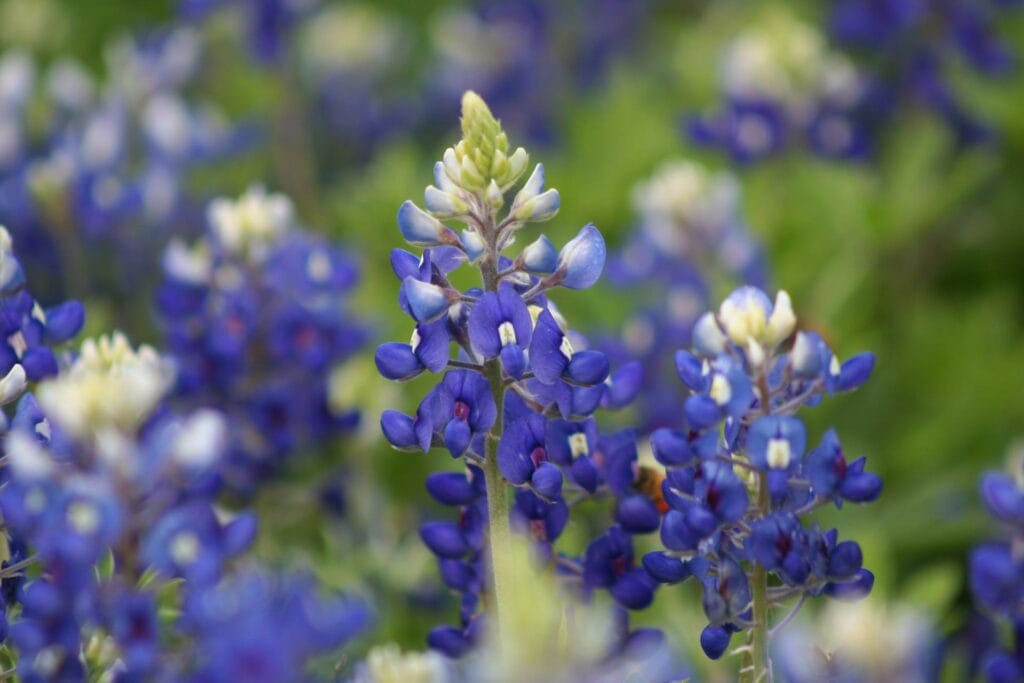
| Scientific Name: | Lupinus texensis |
| Average Height: | 1-3 feet |
The bluebonnet is a flower that is as iconic to the Lone Star State as the Alamo or Tex-Mex. Bluebonnets are actually a type of flowering shrub that is native to the Texas Hill Country and the Edwards Plateau. They grow best in the wildflower fields of central and south Texas and can be found growing in both natural and cultivated fields. Although there are several different types of bluebonnets, including the lupine bluebonnet and the Indian bluebonnet, the most common type found in Texas is the large-leaved Texas bluebonnet, which can grow up to 3 feet in height. During the spring, the hillsides and fields of central Texas are transformed into brilliant oceans of blue, thanks to the annual wildflower bloom that is caused by warm, rainy weather.
2. Indian Paintbrush
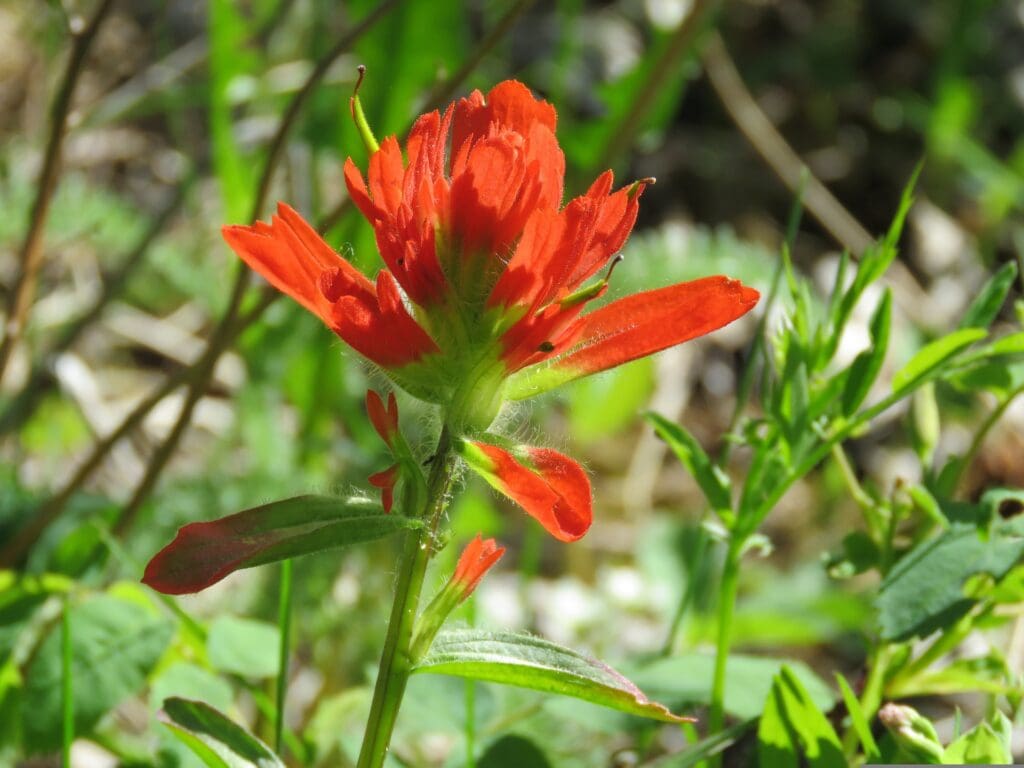
| Scientific Name: | Castilleja indivisa |
| Average Height: | 1-3 feet |
Another common wildflower found in Texas is the Indian paintbrush, a vibrant, beautiful, and extremely bright-colored flower that is said to bring good fortune to anyone fortunate enough to see one in bloom. Found in a variety of different colors, including yellow, orange, and red, Indian paintbrushes are native to Texas and can be found growing in fields and along the edges of woodlands. When cultivated, Indian paintbrushes are usually used as an eye-catching plant to add color to gardens and outdoor areas. A perennial wildflower, the Indian paintbrush can grow up to 2 feet in height and often blooms during the spring and summer months.
3. Firewheel (Indian Blanket)

| Scientific Name: | Gaillardia pulchella |
| Average Height: | 1-3 feet |
The firewheel, also known as the Indian blanket, is a striking flower that is characterized by its red, orange, and yellow blossoms. Although the firewheel can be found in a variety of other states, including New York, Virginia, and Georgia, it has become a common wildflower found in Texas, thanks to its use in landscaping and gardening. This annual wildflower grows best in sandy soil and often begins to bloom in the late spring and early summer months, continuing to flower throughout the warmer months. Firewheels are typically cultivated and used as decorative plants, though they have also been known to become invasive when not properly managed.
4. Winecup

| Scientific Name: | Callirhoe involucrata |
| Average Height: | 1-2 feet |
One of the rarer wildflowers found in Texas is the winecup, a flower that is found growing in the eastern portion of the state, from the Gulf Coast to East Texas. This wildflower is characterized by its bright, vibrant red blooms and can grow up to 2 feet in height. During the spring and summer months, the winecup is usually in full bloom, making it a common sight in eastern Texas. Like many other wildflowers, the winecup is a perennial, meaning that it grows and flowers year after year. The Winecup has become a popular choice among wildflower enthusiasts, and efforts have been made to cultivate it in gardens and fields across the state.
5. Drummond Phlox
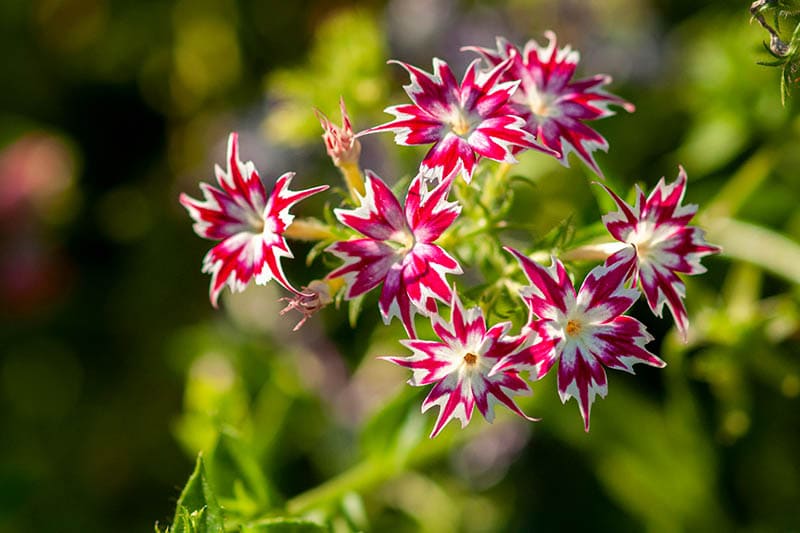
| Scientific Name: | Phlox drummondii |
| Average Height: | 1-2 feet |
Another wildflower found in Texas is the Drummond phlox, a fragrant, beautiful flower that is often used as a decorative plant in outdoor landscaping and park areas. The Drummond phlox is actually a perennial wildflower that grows best in sandy soil and can be found in a wide variety of different colors, including pink, purple, and red. It’s a native Texas wildflower and can be seen growing in fields and meadows across the eastern portion of the state. This wildflower is commonly cultivated for its beautiful blooms, and you’ll often see it in areas where there is sandy soil. This is because it grows fairly well in sandy soil, though it can also grow in some wetland areas as well.
6. Pink Evening Primrose

| Scientific Name: | Oenothera speciosa |
| Average Height: | 1-3 feet |
The pink evening primrose is a beautiful wildflower found in the state that features striking pinkish-lavender blossoms and grows best in sandy (or loose) soil. This wildflower is a native species found in the eastern part of the state and can grow up to 3 feet in height. The pink evening primrose typically blooms in the late afternoon and into the evening, hence its name, and is usually in full bloom during the spring and summer months. Many people love this plant because of its beautiful creamy purple flower petals. You often see it sold at local grocery stores and farmer’s markets as a houseplant.
7. Texas Star

| Scientific Name: | Hibiscus coccineus |
| Average Height: | 1-3 feet |
The Texas Star is a common wildflower found in the eastern part of Texas and is also one of the wildflowers found in Texas that is often cultivated and used as a houseplant or in park gardens. The Texas Star is a type of wild indigo and typically grows to be around 1 foot in height, with flowers that feature five petals. This wildflower has a number of different common names, including wild indigo, woodland indigo, and the Texas Star, and can be seen growing in the eastern part of Texas, usually in areas where the soil is moist and loose.
8. Blue-eyed Grass

| Scientific Name: | Sisyrinchium angustifolium |
| Average Height: | 1-2 feet |
The blue-eyed grass is a fragrant flower that has deep blue petals and yellow stamens. Blue-eyed grass is a native species found in the eastern portion of the state and can grow up to 2 feet in height. This wildflower is typically found growing in open plain areas and can also be found growing in the wild. Blue-eyed grass is a perennial wildflower that typically blooms during the late spring and early summer months. The beautiful purple petals on this wildflower make it one of the most popular house plants in the state of Texas.
9. Scarlet Gilia

| Scientific Name: | Ipomopsis aggregata |
| Average Height: | 1-2 feet |
The scarlet gilia is a strikingly beautiful wildflower that has bright red, pink, and purple blooms and can grow up to 2 feet in height. It’s a native species found in the eastern and southern parts of the state, usually growing in dry plains, marshes, and recreational areas due to its beautiful petals. The scarlet gilia typically blooms during the spring and early summer months. Its flowers look like little red trumpets, and it has a fairly skunky smell that tends to attract wildlife – but it also makes it pretty unpopular as a houseplant. This plant has also been shown to have some medicinal uses in treating blood diseases.
10. Prairie Verbena

| Scientific Name: | Glandularia bipinnatifida |
| Average Height: | 1-2 feet |
The prairie verbena is a native species found in the eastern part of Texas in Central America. It can grow up to 1 foot in height, with flowers that feature a wide range of colors, including red, pink, and purple. This particular wildflower is often seen in grassy, prairie habitats around the South and it is a perennial with a fairly short lifespan and stature. The medium-sized green leaves bloom into gorgeous lavender-colored five-petaled flowers. They make for beautiful house plants and garden additions. This drought-tolerant plant flowers from March through October with its heaviest blooms occurring in spring.

Frequently Asked Questions About Growing Wildflowers
Is wildflower cultivation easy?
Wildflowers can be grown easily, provided that they are given the right conditions. Wildflowers need to grow in areas where there is no other plant. This is why wildflowers will thrive on roadsides that have been left untended to and areas that have been abandoned. To sow wildflowers, you must first select an area, remove any grass, weeds, or obstructions from it, and then you can start to plant them. Wildflowers do not require much attention (which is why they’re so common in nature), but they need sufficient space to grow.
Are wildflowers able to return every year?
There are two types of wildflowers: perennials and annuals. Although perennials are more prolific than annuals, they take longer to establish. Annuals usually only show once a year about 60-80 days after sowing. If you prepare your annuals properly, you will be able to see them again next year. Although they are almost self-sufficient and self-seeding, annuals require a little bit of help. This can be done manually by setting your lawn mower to a high setting and/or cutting down the wildflowers. If you want to get fancy, then use a seedbed roller. This will ensure a full year of production the next year.
Can wildflowers thrive in shady areas?
Some wildflowers can grow well in shade. If you imagine a forest filled with shade-tolerant plants, it is likely that they can thrive in low-light conditions. While wildflowers can grow almost anywhere, some species are more adept at growing in particular conditions than others. You can also buy wildflower seed mixtures containing shade-tolerant wildflowers that can thrive in these conditions.
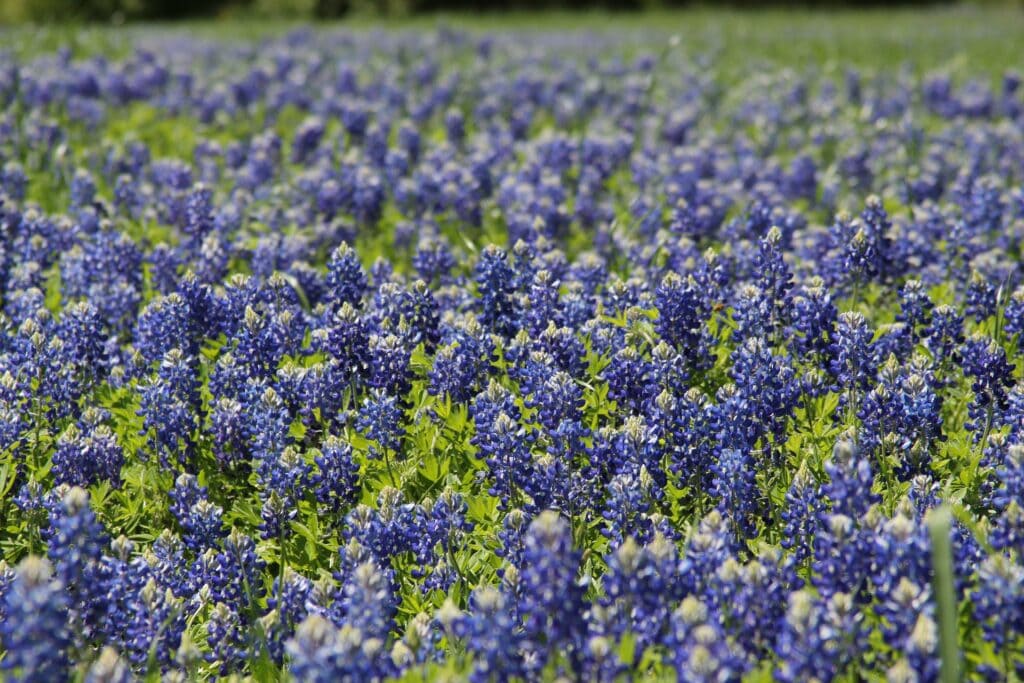
Is it ever too late in the year for wildflower seeds to be planted?
We recommend that wildflower seeds be sown in two seasons: autumn (September/October) and spring (April/May). Although you can technically sow wildflower seeds at any time of the year (although it is not recommended), you might be disappointed by how long it takes for them to appear. Experts would recommend that wildflower seeds be sown in autumn. This is because the seeds must undergo stratification (which is a freezing process) before they can germinate. But it’s always best not to sow in winter.
What will my wildflower meadow look like every year?
The wildflower garden you have will be a bit different each year. There are many factors that will affect how your meadow looks, including soil conditions, weather changes, and the amount of space wildflowers need to grow. Certain wildflowers may thrive in conditions that you create, while others might not. Wildflowers are wild creatures (granted, they’re plants) that pretty much make their own rules – which makes them so fascinating to plant.
Can I add wildflower meadows to my garden?
Yes, just keep things separate. You can create a mini meadow in your garden by using a few simple methods. This can be done by creating a border or a space for a garden bed. It is best to remove any grass, random flowers, or debris from the area you want to plant wildflower seeds. Wildflowers, on the other hand, prefer poor soil conditions (it’s how they thrive). This is why they should not be allowed to co-exist in the same area as garden plants or produce.
Can I sow wildflower seeds in my lawn?
It’s very difficult to plant wildflowers in grasses, no matter if it’s in your front or backyard or in a field. You can try it, but the results will be different. The grass you find in a lawn is likely well-managed and fertilized over the years. This makes it a very fertile and high-nutrient environment that does not make it ideal for wildflowers. The grass would likely choke out wildflower seeds, resulting in very low levels of germination.

Conclusion
Wildflowers are the most beautiful things to look at in nature. They can make a place look even more colorful and attractive, and when you spot them, it’s obvious why people have been drawn to their beauty for centuries. Hopefully, if you’re visiting Texas anytime soon, you’ll be able to view some of these beauties while you’re out and about.
See also: 15 Wildflowers That Grow in Kansas: Identification Guide With Pictures
- https://texashighways.com/wildflowers/the-wildflowers-of-texas-our-top-20-field-guide/
- https://www.wildflower.org/texas
- https://www.everwilde.com/wildflower-faqs.html
- https://www.plantlife.org.uk/application/files/5815/2292/7643/Wild_Flowers_to_Pick_FAQs.pdf
- https://texashighways.com/wildflowers/expert-advice-on-frequently-asked-wildflower-questions/
- https://www.odot.org/beauty/wildflower/faqs.htm
- http://era.daf.qld.gov.au/id/eprint/3082/4/3wildflower-questions.pdf
- https://questions.gardeningknowhow.com/tag/wildflower/
Featured Image Credit: Jessica Jeffery, Pixabay
Contents

